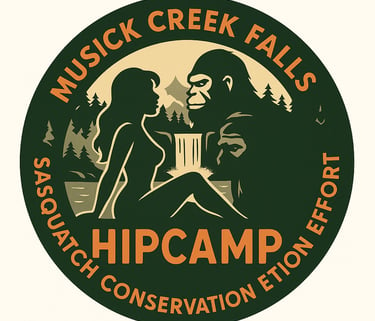
THE HISTORY AND HORROR OF THE SIERRA NEVADA

Musick Mountain and Musick Creek
Musick Mountain, located near Shaver Lake, California, is a notable landmark named after Joel Musick, a prominent figure in the region during the late 19th century. Joel Musick was a pioneer who significantly contributed to the development and exploration of the Sierra Nevada region. Musick Creek, a picturesque stream that meanders through the rugged landscape, also bears his name, serving as a reminder of his legacy.
The Nuim and Mono Native Peoples
Long before pioneers like Joel Musick set foot in the Sierra Nevada, the region was home to indigenous tribes, including the Nuim and Mono peoples. The Nuim, whose history is deeply intertwined with the land, were part of the larger Yokuts group. They lived in harmony with the environment, relying on the abundant natural resources for sustenance. Their society was rich in traditions, with a profound respect for nature and its cycles.
The Mono people, who lived to the east of the Nuim, were also closely connected to the land. The Mono tribe, divided into the Western Mono (also known as the Monache) and the Owens Valley Paiute, were skilled hunters and gatherers. They utilized the diverse flora and fauna of the Sierra Nevada for food, medicine, and materials. The Mono people were known for their intricate basket weaving, a craft that has been passed down through generations.
Violent Clashes: Natives, Miners, and Lumberjacks
As the 19th century progressed, the discovery of gold and the expansion of the lumber industry brought an influx of white settlers, miners, and lumberjacks to the Sierra Nevada region. This rapid influx led to violent clashes between the indigenous peoples and the newcomers.
The miners, driven by the promise of wealth, often encroached upon Native lands, disrupting traditional hunting and gathering grounds. This led to fierce confrontations, as the Nuim and Mono sought to protect their ancestral territories from exploitation and destruction. The tension was further exacerbated by differing worldviews and the settlers' disregard for Native customs and rights.
Lumberjacks, too, played a significant role in the conflict. The demand for timber to support the growing mining operations and the construction of settlements led to widespread deforestation. The lumber industry not only threatened the ecological balance but also infringed upon the sacred sites and resources vital to the indigenous communities. In many instances, the cutting down of trees was seen as an attack on the very fabric of Native life, leading to retaliatory attacks and further violence.
These clashes were marked by brutality on both sides. The settlers, with their superior weaponry and larger numbers, often employed ruthless tactics to suppress Native resistance. Massacres, forced relocations, and the destruction of villages were common. The indigenous peoples, despite being outgunned and outnumbered, mounted brave defenses, using their intimate knowledge of the land to launch guerilla-style attacks against the encroachers.
Bounties on Native Scalps
Adding to the violence, the United States government, along with state and territorial governments, sometimes offered bounties for Native American scalps. During the mid-19th century, particularly during the California Gold Rush, bounties were issued as part of efforts to protect settlers and facilitate land acquisition. These payments were made for the scalps of Native American men, women, and children, with amounts varying but sometimes reaching around $20 per scalp. This bounty system contributed to the widespread violence and significant decline in Native American populations, serving as a stark reminder of the brutal measures employed during American expansion.
Natural and Geographical History
The Shaver Lake area, including Musick Mountain and Musick Creek, is part of the majestic Sierra Nevada mountain range. This range was formed over millions of years through tectonic activity, volcanic eruptions, and the gradual erosion of ancient rocks. The geological history of the Sierra Nevada is marked by the uplifting of granite, creating the stunning peaks and valleys we see today.
During the last Ice Age, glaciers carved out many of the features in the region, including deep valleys and U-shaped canyons. As the glaciers retreated, they left behind a landscape of breathtaking beauty, with crystal-clear lakes, towering granite cliffs, and lush meadows.
Shaver Lake itself is a reservoir created in the early 20th century by the construction of the Stevenson Creek Dam. The lake was named after C.B. Shaver, a lumber company owner who played a crucial role in the area's development. Today, Shaver Lake is a popular destination for outdoor enthusiasts, offering activities such as boating, fishing, hiking, and camping.
The Flora and Fauna
The Shaver Lake area is home to a diverse array of plant and animal species. The forests are dominated by towering conifers, including ponderosa pines, sugar pines, and giant sequoias. The undergrowth is rich with shrubs, wildflowers, and ferns, creating a vibrant and dynamic ecosystem.
Wildlife in the region includes black bears, mountain lions, deer, and numerous bird species. The lakes and streams are teeming with fish, including rainbow trout and brown trout, making it a paradise for anglers.
The Future of Musick Mountain and Shaver Lake
The future of Musick Mountain, Shaver Lake, and the surrounding region is a blend of preservation and sustainable development. Efforts are being made to protect the natural beauty and ecological balance of the area while accommodating the increasing number of visitors seeking outdoor recreation.
Conservation initiatives focus on maintaining the health of the forests, streams, and lakes, ensuring that wildlife habitats are preserved and that the diverse flora continues to thrive. These efforts include reforestation projects, invasive species management, and measures to reduce human impact on the environment.
Cultural preservation is also a priority, with increased recognition of the significance of the Nuim and Mono peoples. Initiatives to honor their heritage and educate the public about their history and traditions are underway. This includes collaborations with Native communities to protect sacred sites and promote cultural awareness.
Sustainable tourism is being promoted to balance economic development with environmental stewardship. This involves creating eco-friendly infrastructure, offering educational programs for visitors, and encouraging practices that minimize ecological footprints. By fostering a respectful and responsible approach to enjoying the natural wonders of the region, future generations can continue to experience and appreciate its beauty.
Conclusion
The history of Musick Mountain and the surrounding Shaver Lake area is a tapestry woven with the threads of indigenous heritage, pioneer spirit, and natural beauty. The Nuim and Mono peoples laid the foundation with their deep connection to the land, while pioneers like Joel Musick and C.B. Shaver built upon it, shaping the region into what it is today. The violent clashes between the Native peoples and the white settlers, miners, and lumberjacks, along with the bounty system, are sobering reminders of the turbulent times that accompanied the development of this area. The geological processes that formed the Sierra Nevada have created a landscape of awe-inspiring beauty, inviting all who visit to explore and appreciate its wonders. Whether hiking the trails, fishing in the lakes, or simply taking in the stunning vistas, the legacy of this remarkable region continues to inspire and captivate. As we look to the future, the commitment to preserving its natural and cultural heritage ensures that Musick Mountain and Shaver Lake will remain cherished destinations for generations to come.
FILLED WITH GRATITUDE
We first came to the Falls 5 years ago and fell in love with the land and captivated by its power. Because of that power, we knew that we had to share. We met in Pismo Beach, California 10 years ago, a knew that we wanted to travel. So we sold our business and went full-time in our class A. We have seen some incredible places, but the Falls called us home. We soon found that it was too difficult to support ourselves and stay up here full-time. One day, my wife suggested we make a few sites and post them on Hipcamp. I was out of ideas and thought why not. Not a week after posting, we knew that with your support we could maintain the land, and still have something to eat at the end of the day. The more Hipcampers came, the more we enjoyed sharing this place. To get to see people during their vacations and at their happiest and most adventurous states. Then I noticed the true power of the land. I've witnessed teenagers reconnect with a parent they have not connected with for some time. Couples regain passion once lost. Tired and stressed individuals rejuvenated. People have expressed a feeling of weight being lifted and the brain fog they didn't even know they had, now gone. Sharing this place has proved to be rewarding in more ways than one. So Hipcampers you have our gratitude and we hope to see you soon.





